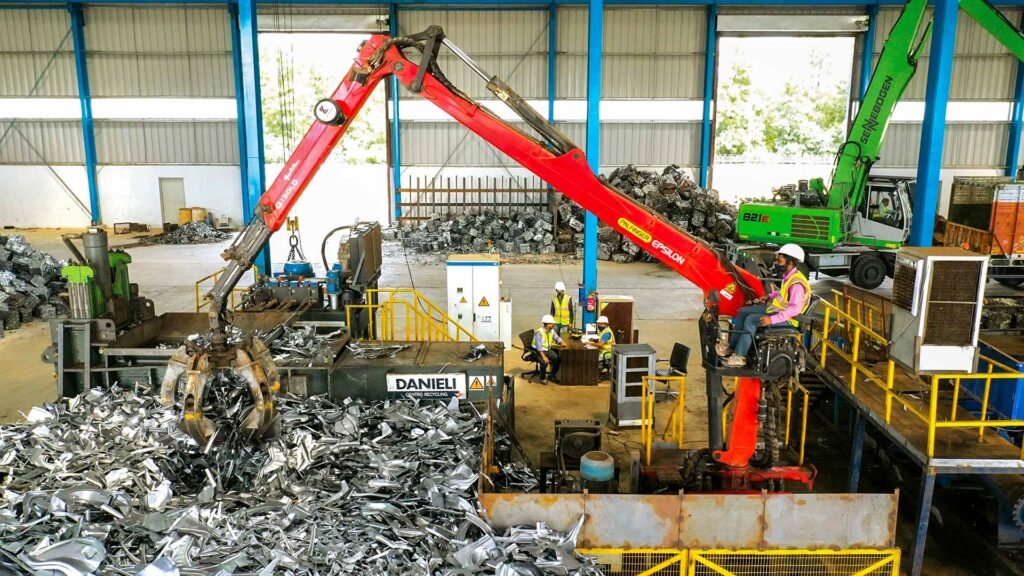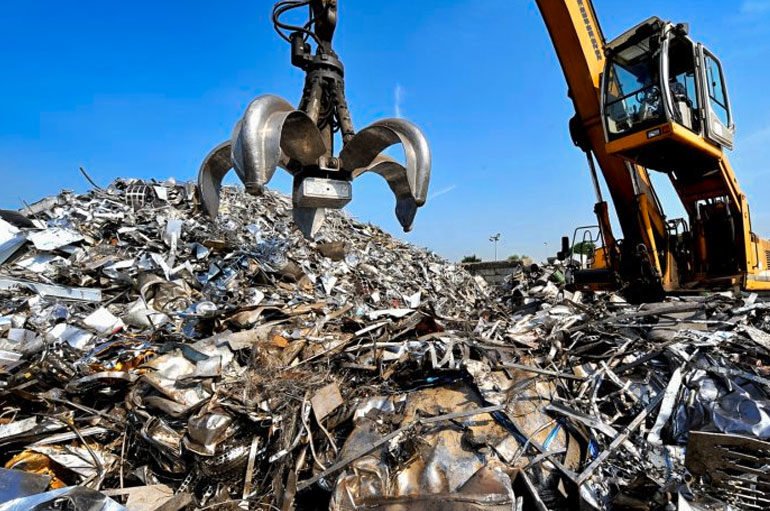Recent Posts
Andhra Pradesh Reports 10.5% GSDP Growth, Tourism Sector Set for Boost
September 13, 2025Anna Salai’s 3.2-km Elevated Corridor Above Metro Tunnels Gathers Pace
September 12, 2025Steelmaking Revolution: India’s Scrap Consumption Rises 8% in 2024

India’s ferrous scrap consumption rose by 8% year-on-year in the first 10 months of 2024 (10MCY’24), reaching 28.08 million tonnes (mnt) compared to 26 mnt in the same period last year. This marks a pivotal shift toward sustainable steelmaking practices.
Domestic Scrap Takes the Lead
Domestic scrap consumption soared by 22% to 21.06 mnt, while imported scrap usage fell 19% to 7.02 mnt, highlighting a growing preference for locally sourced materials. Key drivers include increased availability and favorable pricing.
Initiatives like the Indian Railways’ scrap sales program, targeting INR 5,400 crore revenue in FY25, and the End-of-Life Vehicle (ELV) policy are significantly boosting domestic scrap generation. ELV is expected to add 6 mnt of scrap annually by 2025, fostering a circular economy.

Shift to IF-EAF Steelmaking
The share of Induction Furnace (IF) and Electric Arc Furnace (EAF) steelmakers rose, consuming 22.69 mnt of scrap—an 11% year-on-year increase. In contrast, the Blast Furnace (BF) route’s share fell by 3% to 5.36 mnt. These electric methods align with India’s carbon reduction targets, offering cost-efficient and eco-friendly steel production solutions.
Price Advantage Drives Domestic Preference
Domestic scrap prices, such as HMS 80:20 DAP Jalna, remained INR 1,651/t cheaper than imported alternatives, at INR 33,180/t versus INR 34,775/t in October 2024. This price gap makes local procurement more viable as global scrap availability tightens.
Steel Demand Boosts Scrap Consumption
India’s crude steel production rose 6% year-on-year to 122.68 mnt in 10MCY’24, further fueling scrap demand.
Outlook: Reduced Import Reliance
Domestic scrap availability is set to grow, with imports projected to drop over 30% in FY25. Investments in recycling infrastructure and the rise of alternative feedstocks like sponge iron will solidify this trend, supporting a self-reliant and sustainable steel industry.
India’s scrap market is evolving rapidly, driving sustainability, cost efficiency, and growth in the steel circular economy.
Recent Posts
Categories
- AP35
- Apartments17
- Bengaluru114
- Budget 202520
- Cement99
- Chennai293
- Construction547
- CREDAI15
- Editors Pick42
- Equipment21
- Events11
- GST11
- Highways61
- Housing98
- Hyderabad39
- Industrial223
- Infrastructure324
- Interiors11
- Iron Ore18
- Karnataka26
- Kerala20
- Land64
- Market Updates196
- Metal18
- Metro87
- Mining13
- MSME10
- News1,477
- NHAI42
- Paints32
- Properties15
- Puducherry6
- Real Estate435
- Road158
- Sand18
- Short News117
- SIPCOT3
- Steel Daily331
- Stocks6
- Tamil Nadu262
- Technology34
- Telangana18
- Trade3
- Trending News1,052
- Video1
Related Articles
Sumitomo, Bajaj JV to Invest ₹2,345 Crore in Karnataka Steel Plant; NGEF Revival on Agenda
Karnataka secures ₹2,345 crore Sumitomo-Bajaj steel plant in Koppal; NGEF revival, EV...
BySamrita JosephSeptember 13, 2025India to Manufacture High-Grade Steel for Automobile Sector, Cut Import Dependence
India’s automobile industry is one of the largest markets in the world,...
BySamrita JosephSeptember 13, 2025Vedanta Accelerates Land Acquisition for Major Aluminium Smelter in Odisha
Vedanta is acquiring land in Dhenkanal, Odisha, for a new 3 MTPA...
BySamrita JosephSeptember 13, 2025Forum Malls Announces Aggressive Expansion Plan with 14 New Centres by 2029
Forum Malls, Prestige Group's retail arm, announces plans to double its portfolio...
BySamrita JosephSeptember 13, 2025















Leave a comment